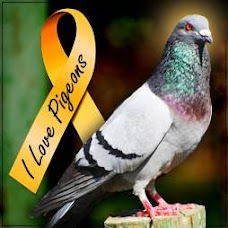Bird's-eye view of big pictures
Chris Fulton | October 02, 2008
ART critics beware: when it comes to appraising the works of Monet and Picasso, the humble pigeon can give you a run for your aesthetic money.
The surprising discovery by Japanese neuropsychologist Shigeru Watanabe at Keio University adds to earlier research revealing that the multi-talented birds can also hear the difference between Bach and Stravinsky.
Watanabe put the pigeons to the artist challenge as part of his study on how pigeons think and process information. He says the work may provide important clues to the mystery of how humans see and interpret art.
According to Watanabe, who reported his findings in the journal Animal Cognition, birds, like humans, rely on their eyesight to find food, make a home and avoid their predators. Such selective pressures give pigeons and humans a heightened visual ability, which by chance enables both species to appreciate the subtle nuances of artistic style.
"These observations suggest the visual functions of pigeons are comparable (with those of) humans," Watanabe says.
Commenting on the research, visual neuroethologist Jochen Zeil, from the Australian National University, says the findings are no laughing matter. "I'm not surprised that they found pigeons could distinguish the fine details of paintings," he says.
Zeil notes that people often underestimate how well other animals can see. "This research gives us a better appreciation of how amazing animals other than ourselves are in terms of their visual abilities," he says.
In order to tease out the critical faculties of pigeons, Watanabe and his colleagues first showed a pigeon 10 paintings by Monet. Then they asked the same pigeon to identify -- peck out -- a different work by the same artist from a mixture of paintings by Monet, Renoir, Matisse and Delacroix. The pigeons were able to do this for a range of other artists as well, including Picasso, Van Gogh and Chagall.
After testing 21-year-old psychology students with the same paintings, Watanabe found that pigeons and humans were on a par with their artistic detective work.
Even when the paintings were converted to black and white, both the pigeons and the students could still identify the artist correctly. And when other aspects of the images were changed, such as blurring of the finer brushstroke details, both groups got the answer wrong.
According to Watanabe, the results suggest that pigeons and people assess multiple characteristics of an object when making a judgment, such as the particular combination of colour and pattern.
Saturday, October 4, 2008
Subscribe to:
Post Comments (Atom)












No comments:
Post a Comment